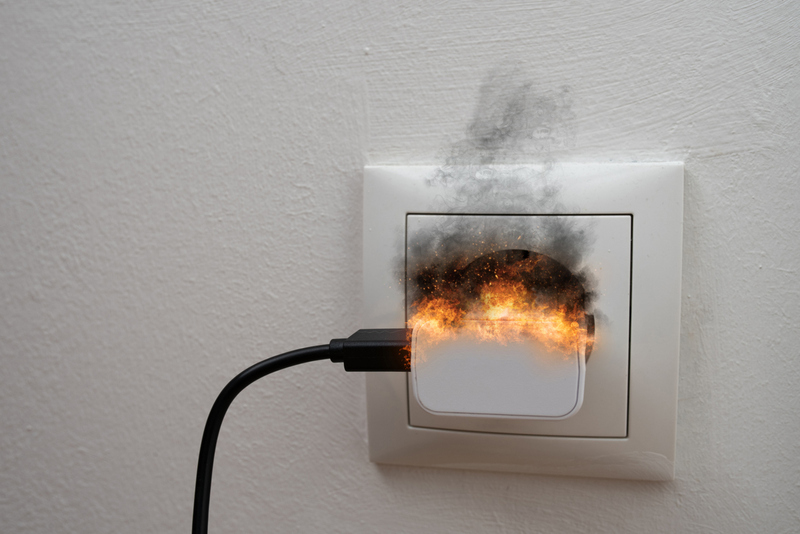How to Choose the Right Pillow for High Quality Sleep
Social Links
When it comes to getting a good night’s sleep, we all know we need a good quality, comfortable and supportive mattress. But did you know that choosing the right pillow is just as important? The mattress may support our body, but it’s the pillow that holds our head and neck. Having a good one means we’re more likely to sleep well – but as anyone who’s ever slept on a bad one will know, a pillow that is too fat, on the hard side, very thin, lumpy or saggy can have us tossing and turning all night.
So how do you find your perfect Goldilocks pillow? It’s about getting the right height, firmness, filling and fabric – and these depend on your size, sleeping style and personal preference. To help you narrow it down we’ve put together this handy guide, so you’ll never have to worry about waking up with a crick in your neck again.
- Types of Pillow
- How to Choose the Right Pillow for Neck Pain
- How to Choose the Right Pillow for Your Sleeping Style
- How to Choose the Right Mattress and Pillow Combination
- General Pillow Care and Maintenance
Types of Pillow
When it comes to a place to rest your head, not all pillows are created equally. A good quality one is always worth the investment, but not all high-quality pillows are identical. Size-wise, most come as a standard 75cm x 50cm, although if you have a king bed then bigger, king-size pillows are available. Square pillows make great decoration but aren’t so great for sleeping on, while wedge-shaped pillows are triangular and work by elevating your head and neck slightly above the rest of your body.
When it comes to materials, there is a wide variety there as well. Natural fillings include feathers, down, wool, Tencel (which is often made from eucalyptus fibres) and bamboo, while synthetic options include nanocubes, microfibres and memory foam. Each has different support levels, longevity, environmental friendliness and hypoallergenic ratings, so the right one for you will depend on several factors.
How to Choose the Right Pillow for Neck Pain
If you suffer from neck pain, choosing the right pillow can make a significant, positive difference to your ability to sleep well at night and subsequently how you feel during the day. Having the wrong pillow can make the problem worse (or may even be the cause) so it’s worth taking the time to get it right and try out different options if possible .
The most important consideration is to ensure that your head is well cushioned, and your neck can rest in its straight or neutral position. A pillow that forces you to sleep with your shoulders hunched or your neck arched will strain your muscles and likely cause tension and headaches during the day. An orthopaedic pillow made from memory foam may be one of the best options, especially one with contours for extra support.
How to Choose the Right Pillow for Your Sleeping Style
Side Sleepers
Side sleepers need extra support from their pillow, to keep the neck in alignment and take pressure off the shoulders. Knowing how to choose the right pillow for side sleepers depends on the width of your shoulders. If it’s too thick, thin or soft the neck will tilt into an unnatural position. A contoured, memory foam pillow is a good choice – although if you prefer a natural material then wool and bamboo are also supportive. Combining your pillow with a memory foam mattress to cushion the hips and shoulders may be the optimal way for side sleepers to enjoy an uninterrupted night’s sleep.
Back Sleepers
Back sleepers need the least support from their pillow, as assuming you have a good mattress your neck should automatically be in the correct position. Soft pillows are perfectly fine for back sleepers, and as long as the pillow isn’t too thick (which would force the head forward) you can choose almost any material you like. Soft feathers or down are great if you prefer a fuller, more luxurious pillow, though for a more vegan-friendly option then a microfibre or thin memory foam pillow would be suitable too.
Many back sleepers are prone to snoring and other sleep-disrupting conditions, like indigestion. If you experience either of these, then it might be best to consider a wedge pillow, or even better, an adjustable bed so you can raise your entire upper body altogether.
Front Sleepers
Front sleepers are at risk of spinal tension when they sleep, as the neck is forced to twist, arch or both. It’s therefore imperative to have a pillow that does not exacerbate the problem. Ideally, front sleepers should try and keep their head at roughly an inch above the mattress unless they have a larger body type.
Stomach sleepers can get by with the thinnest pillows, and are fine with a soft material such as down or microfibre. If you prefer plant-based materials then bamboo and Tencel are both highly breathable, as well as being hypoallergenic.
How to Choose the Right Mattress and Pillow Combination
We know that choosing the right mattress and pillow is important, but choosing a mattress and pillow that complement each other will also help you get the best possible night’s sleep. When it comes to mattress-pillow compatibility, knowing how to get the right pillow height or loft, is the key. Generally, the firmer the mattress, the higher the loft should be, and vice versa for a softer mattress.
Therefore, if you have a firm mattress, such as our Jupiter extra firm memory foam or Leda 2150 pocket sprung adjustable mattress, you will sit higher up on the mattress and therefore need a thicker pillow, ideally about five inches, to support your neck – especially if you are a side sleeper. If you prefer a soft mattress, for example the Eros memory foam or Leda 1200 pocket sprung, then your pillow only needs to be three inches or thinner, as your body sinks lower into the mattress and you don’t need as much loft to keep your neck aligned. If you prefer somewhere in the middle, then a three-to-five-inch pillow matches perfectly with a medium mattress such as the Saturn memory foam topped sprung mattress. And if you prefer bedtime to be a little cooler, the Venus is pocket sprung but topped with more breathable latex.
General Pillow Care and Maintenance
Once you’ve chosen the correct pillow, looking after it will help keep it in its best condition. Some general tips for pillow maintenance are:
Keep it clean – rather than use a new pillow right away, wash it first to get rid of any dust and particles from the manufacturing and transportation processes. Pillows, like mattresses, can collect matter such as dust, skin and hair particles. Natural materials (ie feathers and down) can also attract mites, so be sure to give it a regular clean. Always follow the instructions on the label, but generally, cotton, microfibre and even feathers can be machine washed on a gentle cycle.
Other materials, for example wool, can be hand washed by immersion in a sink or bath, while memory foam can be spot cleaned and vacuumed. Either way, always make sure your pillow is completely dry before using it again.
A pillow protector can prolong the life of your pillow and the frequency it needs to be washed. Wash protectors once a month, and your pillowcases at least every two weeks.
Replace it every two years – pillows don’t last as long as mattresses. While some materials and higher-quality pillows will last longer than others, all lose elasticity over time and none will keep providing adequate support for more than a couple of years or so. If it feels lumpy, it doesn’t spring back when folded or you just don’t wake up feeling refreshed anymore, then it’s time for a new pillow.
Choose an appropriate fabric for your pillowcases – after all, this is the part of the pillow that’s directly touching your face, so you ought to have something that feels comfortable and is kind to your skin. Wool or flannel fabrics keep their heat; natural fabrics including cotton and linen are the most absorbent; and synthetics such as microfibre have moisture-wicking properties. Silk and satin are the most luxurious, though they are not vegetarian-friendly (unless you choose a polyester satin), while cotton, wool and microfibres are the most hypoallergenic. Whichever you choose should be the most comfortable for you.
The Bottom Line
It’s clear that everyone has a different sleeping style and different sleeping preferences – so it makes sense that there should be a range of pillow types to suit everyone. Which one you choose will depend on your sleep style, choice of firmness and preference of material, and whichever it is, it should make a valuable contribution to your overall quality of sleep.
For optimal night-time comfort, pair your ultimate pillow with the perfect mattress and adjustable bed from the Mobility Furniture Company. That way, every part of your body will be supported, from your head to your toes, and like Goldilocks, you’ll be able to find your perfect sleeping position, night after night after night.
*This website contains general medical information. The medical information is not advice and should not be treated as such. Read our full Medical Disclaimer here.



